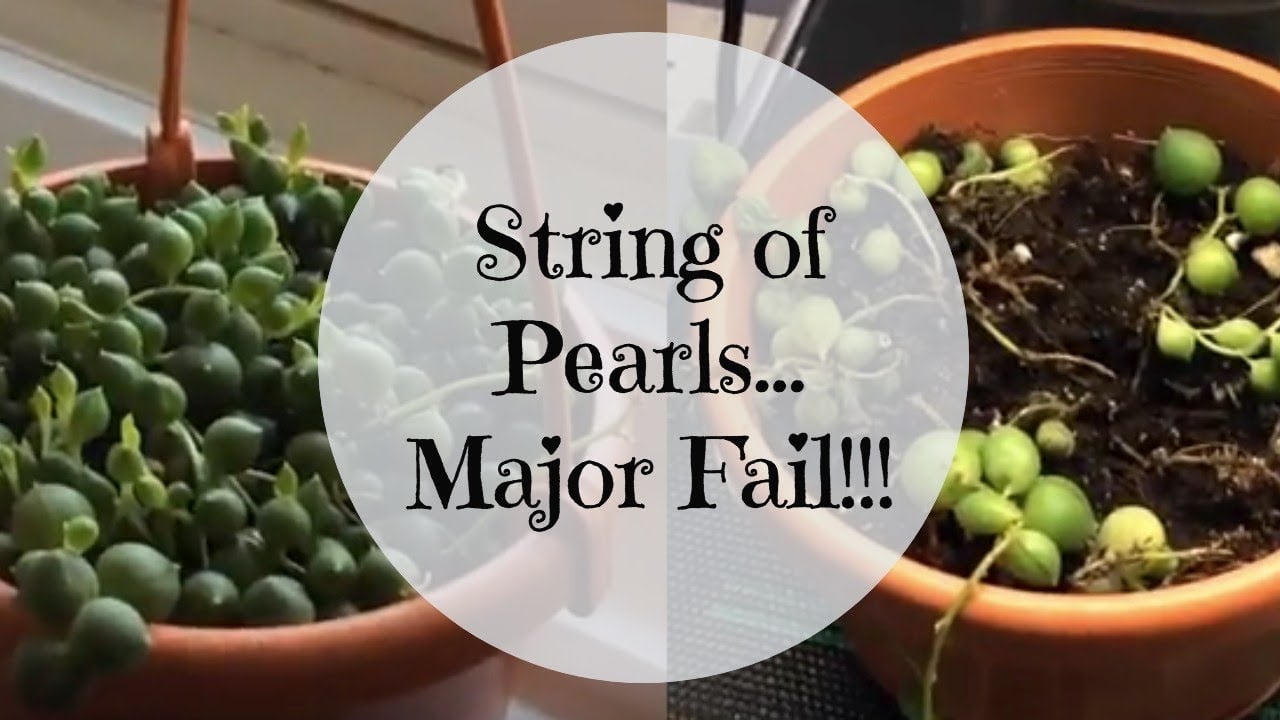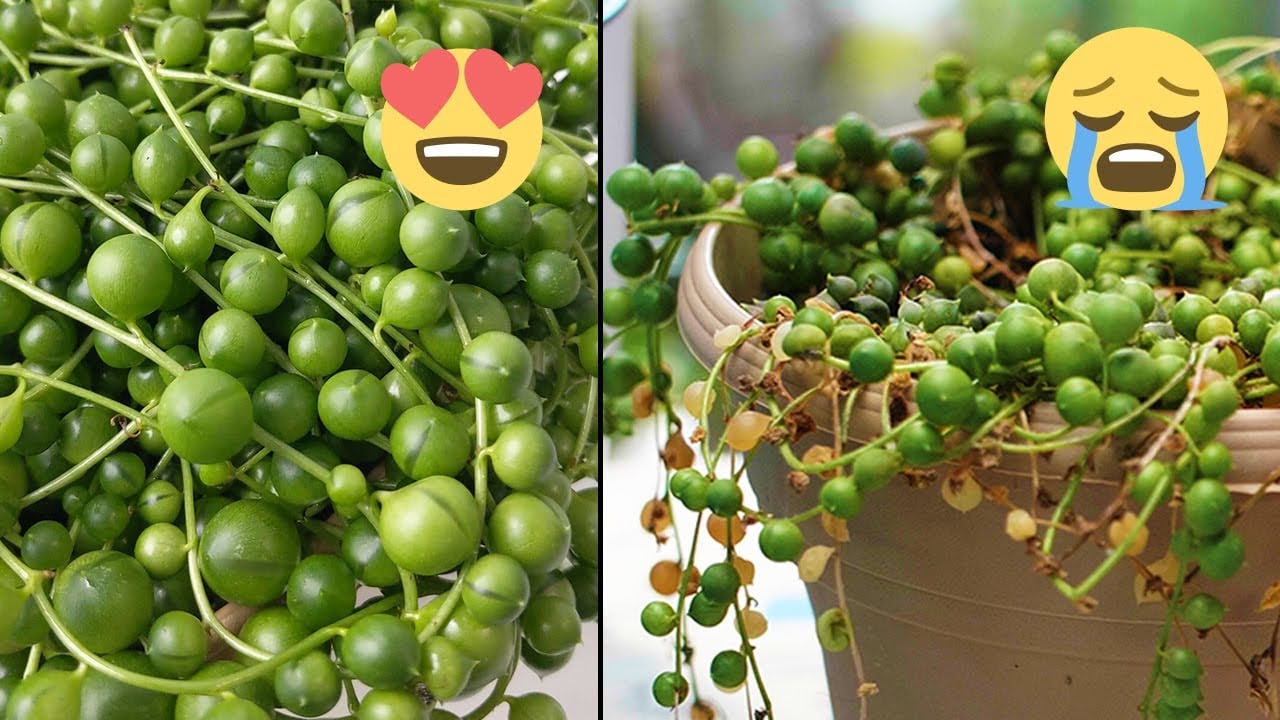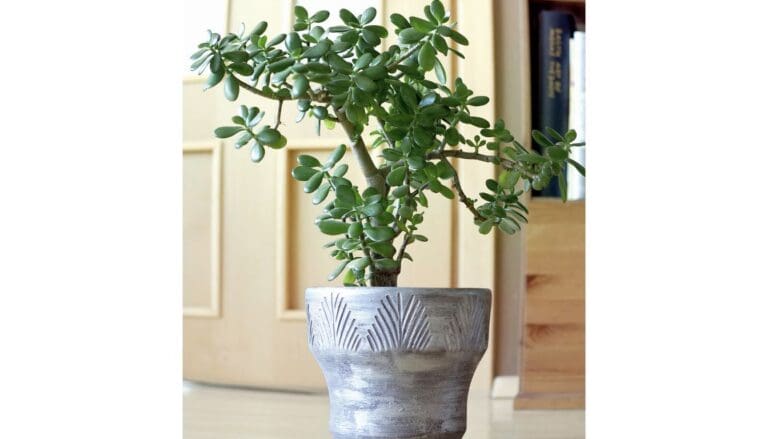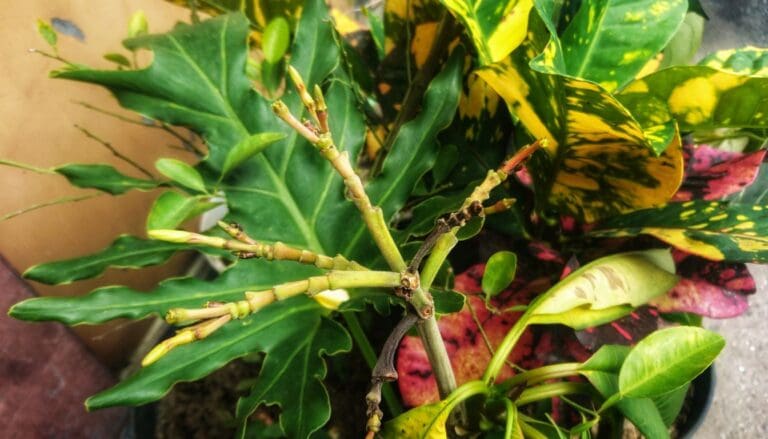How To Save String Of Pearls From Root Rot? (+Signs & Causes)
Root rot is a severe problem in plants, but you can treat it with the right actions taken at the right time. If you don’t treat root rot on time, you might not be able to save your string of pearls on time. Identifying the problem at the right time is the first step to fixing the problem.
It might seem challenging, but we will help you fix the root rot problem in your string of pearls. We will also learn how to prevent it in future.
To save a string of pearls from root rot, gently remove the plant from the pot and examine its root. Clean the roots by removing the excess soil and trim any damaged parts. If the roots are mushy, let them dry out for a day or two and then repot the plant with a fresh succulent mix in a new pot.
Overwatering is one common problem in all plants, and the string of pearls can get overwatered easily, causing root rot. If you suspect an overwatered plant, don’t ignore it and start taking immediate action.
Root rot comes with signs that indicate that there is some problem with your plant. We shall discuss the symptoms, causes, and ways of treating root rot in your string of pearls.

Please note: Simplify Plants is reader-supported. Some links in the post are affiliate links and I get a commission from purchases made through links in the post.
Signs of root rot in a string of pearls
The signs of root rot are common to various other problems, making it tricky to diagnose root rot in the initial stages.
If you start noticing more than one sign, you should inspect the roots to identify root rot.
If there is root rot, you need to get the plant out of that situation immediately to get your string of pearls back to health again. Leaving it there for a few days can lead to wilting of your plants.
The string of pearls always shows some signs when there is root rot. Let’s take a look at some.
- Brown or yellow pearls
- Shriveled pearls
- Foul odor from soil or roots
- Brown and mushy roots
- Stunted growth
Let’s understand the problems in detail.
Brown or yellow pearls

Checking the pearls is a great way to understand the health of the plant. If you have a healthy string of pearls, it will have pulpy and green pearls.
However, yellowing or browning pearls are a sign that your string of pearls is having some problem.
If the plant is overwatered or has root rot, the leaves often turn yellow or brown and eventually fall off from the plant.
It can also happen if pests have infested your string of pearls. You need to check the plant thoroughly and look for pests. If the plant doesn’t have a pest infestation, you can take the plant out of the pot and check the roots.
Shriveled leaves
The string of pearls doesn’t store water in their stems and instead stores in their leaves or pearls. The stored water helps the plant to survive droughts in their native land.
Shriveled leaves are not just the sign of under-watering but can also be a sign of overwatering. An overwatered string of pearls means there are chances of root rot.
When you overwater a plant, the leaves get too much water, due to which they burst and look shriveled.
So if you notice shriveled leaves, you should check the soil and the roots to find out if there is root rot.
Foul odor from soil or roots

The smell is a great indicator that can tell if your string of pearls has root rot.
If you go near the plant and check the potting soil and get a stinking or foul smell from it, your plant might be suffering from root rot.
If the leaves are dull and yellow or brown, it’s time to take the plant out of the pot and check the roots.
Brown and mushy roots
When you have root rot, the roots don’t look healthy and start changing color and texture.
Healthy roots usually have a dry and crispy texture. But a plant that has root rot will have brown or black roots that will also become mushy.
If you doubt root rot, you need to take the plant out of its pot and check the roots. If they are brown, flaky, and mushy, you need to rescue the plant.
Stunted or slow growth

If you have brought a new string of pearls home, it will need some time to adjust to the new environment. If the growth is slow during that time, you should not worry about it.
However, if it’s been some time and you still feel that the plant is not growing despite fulfilling all its needs, there are chances of root rot.
Winter is the dormant period for these plants, and they don’t show much growth during this time. If you notice slow or stunted growth during the growing season, that’s when you should check the roots.
Upon noticing any one or more of the signs mentioned above in your string of pearls, you should act fast; otherwise, the root rot will spread, and it might become difficult to save the plant.
What causes root rot in the string of pearls?
The strings of pearls are succulents that don’t like to be overwatered and don’t like soil that retains water.
Since these are native to dry and arid regions, the string of pearls often suffers due to overwatering as many owners fail to understand the specific water requirement of these plants.
There can be other reasons that cause root rot in the string of pearls. We are going to discuss these issues here.
Overwatering

Since the strings of pearls are sensitive to overwatering, they don’t like to get overwatered. We should always check the soil before watering this succulent.
On average, the strings of pearls need water once every two weeks, and during winter, they need even less water.
When the string of pearls is overwatered, the soil remains moist most of the time and doesn’t get the chance to dry up. Due to this, the plant sits on the water for too long, and that causes root rot.
Root rot weakens the roots and stops them from absorbing nutrients from the soil, making the plant weak.
Overwatering and root rot creates the perfect environment for the pests, and that further damages the plant.
Also read: How often should I water my string of pearls?
Overfertilization

Strings of pearls are native to the arid regions of South Africa, where they get poor quality soil, so these plants don’t need too much fertilizer.
Many owners don’t fertilize the plant, but fertilizing boosts the plant’s growth and replenishes the lost nutrients in the soil.
If you make the mistake of fertilizing this succulent in the same way as the other plants, you have an over-fertilized string of pearls.
An over-fertilized string of pearls will show signs such as stunted growth, browning pearls, etc.
The strings of pearls are light feeders that need diluted doses of liquid fertilizers. You should avoid fertilizing during the wintertime as the plants go dormant during this time.
Overfertilization can weaken the roots, stress the plant, and finally, lead to root rot in your plants.
Also read: Should You Fertilize String Of Pearls?
Poor drainage
Besides being overwatered, we need to check the drainage system.
Plants need to have a sound drainage system that allows the plant to absorb the required water and eliminate the rest from the system.
A sound drainage system mainly implies well-draining soil and a pot that has proper drainage holes in it.
It can be a cause of root rot even if you are watering as per the correct schedule.
You need to check the drainage holes of the pot and make sure that they are not blocked. If the drainage holes are not working correctly, the water will remain under the pot, and the plant will sit on water for days.
If you notice that the soil of your string of pearls remains moist for longer than usual, it might be time that you check the drainage holes and ensure that you use well-draining soil.
Potting soil type

Plants absorb the nutrients and minerals from the soil to grow and remain healthy. Therefore, you must choose the correct potting mix for your string of pearls.
The string of pearls needs a well-draining and well-aerated soil mix that can provide all the required nutrients.
If you are using regular potting soil for your string of pearls, you are making a mistake as this will hold more moisture than is required.
You can use cactus or succulent mix available in the market or create your customized potting mix for your string of pearls.
If you get a foul smell from the soil or retain water and stay moist for too long, it will cause root rot in your plant.
You need to repot the plant using a new soil mix that is well-draining and well-aerated to allow air to pass inside the soil to keep the roots healthy.
Also read: What Kind Of Soil Does String Of Pearls Need?
Size of the pot

Even the size of the pot can impact the health of your plant.
If you are using an oversized pot, it will hold more water than what the plant needs. The plant will sit on the water and will have root rot.
Therefore, you should be careful while choosing the right pot for your string of pearls.
Get a pot based on the size of the plant. In repotting, choose a pot that is only one size larger than the current one.
How do you fix root rot on string of pearls?
Repotting is the best solution when your string of pearls has root rot. In case of a more severe condition, you might need to propagate the plant.
The ingredients that you need to perform repotting of the string of pearls are:
- Fresh potting soil
- Pruners
- Disinfectant or rubbing alcohol
- New pot
Let’s understand the process of repotting now. Prepare the fresh soil mix beforehand.
- Take all the stems and place them together on one side to keep them out of the way.
- Take the string of pearls out of the pot. Be very gentle while doing this as the roots of this plant are very sensitive and can get damaged easily.
- Remove the soil from the roots.
- Clean the pruners with rubbing alcohol or disinfectant and remove all the roots that are brown and mushy.
- Take the new pot and place some stones at the bottom as this will prevent the blockage of drainage holes. Add the fresh soil mix to the pot.
- Place the string of pearls in the middle and add soil from all sides to eliminate the air pockets inside the pot.
- Water the string of pearls thoroughly. Make sure that excess water is getting removed through the drainage holes.
- Avoid fertilizing the plant right after repotting, as that can stress the plant. Wait for at least a month.
- Provide enough light to the plant and let it adjust in the new pot.
Note: You should repot during the growing season. Repotting during winter will cause stress or shock to the plant.
How to prevent root rot in a string of pearls?
If you want to prevent root rot in your string of pearls, you need to take care of the plant and follow the below-mentioned steps.
- Follow a watering regime that matches the water requirements so that you don’t overwater the plant.
- Before you water the plant, check the moisture of the soil and never water when the soil is wet.
- Use well-draining and well-aerated potting soil.
- Use the correct sized pot. The pot should have working drainage holes that let the excess water drain out of the system.
- Provide enough light so that the soil can dry up.
- Try to maintain the ideal temperature and humidity.
If you can take care of these, you will have a healthy and growing string of pearls. Keep a check on the plant and try to notice if the plant is showing any signs.
If you notice the signs and identify the problems early on, treating the plant and bringing it back to health will become easier.
Ref: Wikipedia, Missouri Botanical Garden, University of Wisconsin.
Recommended Garden Supplies
| Product Image | Our Recommended Gardening Supplies | Check Offers! |
|---|---|---|
Top Top
Top
Top
Top
Top
Top
Top
Top | rePotme Houseplant and Tropical Classic Potting Soil Mix | Check Offer On Amazon |
 Top
Top
Top
Top
Top
Top
Top
Top | Espoma Organic Indoor Plant Food | Check Offer On Amazon |
 Top
Top
Top
Top
Top
Top
Top
Top | GooingTop LED Grow Light 6000K Full Spectrum Clip Plant Growing Lamp | Check Offer On Amazon |
 Top
Top
Top
Top
Top
Top
Top
Top | Soil Moisture Meter | Check Offer On Amazon |
 Top
Top
Top
Top
Top
Top
Top
Top | Govee Hygrometer Thermometer, Bluetooth Enabled! | Check Offer On Amazon |
 Top
Top | LEVOIT Humidifiers for Large Room(Best For Plants) | Check Offer On Amazon |
 Top
Top
Top
Top
Top
Top
Top
Top | Upgraded DIY Automatic Drip Irrigation Kit, 15 Potted Houseplants Support | Check Offer On Amazon |
 Top
Top
Top
Top
Top
Top
Top
Top | Stainless Steel Heavy Duty Gardening Tool Set | Check Offer On Amazon |
 Top
Top
Top
Top
Top
Top
Top
Top | Bonide Insecticidal Soap | Check Offer On Amazon |
 Top
Top
Top
Top
Top
Top
Top
Top | Bonide 32 oz Spray Neem Oil for Organic Gardening | Check Offer On Amazon |
 Top
Top
Top
Top
Top
Top
Top
Top | Garden Safe Fungicide | Check Offer On Amazon |








